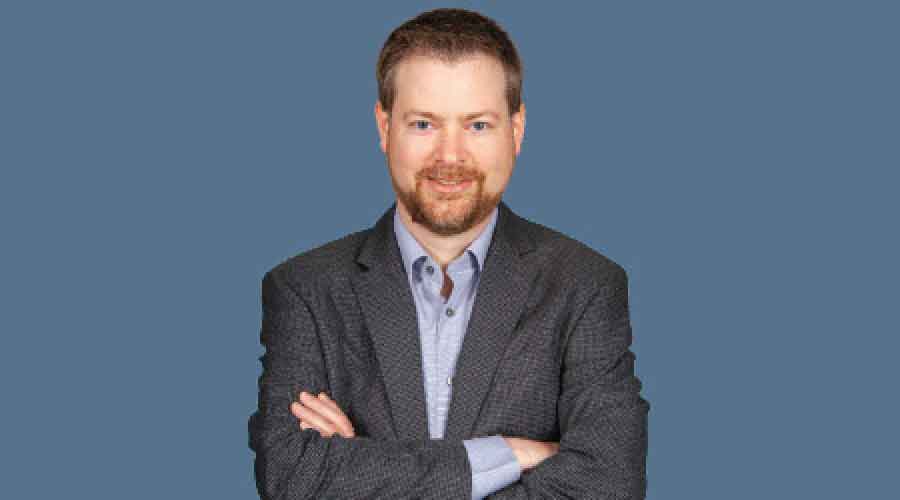As San Francisco Requires Buildings to Disclose Energy Use, the Obama Administration Pushes for Federal Action
California's energy policy is generally viewed as ahead of the curve, signaling where the country is likely to be headed, eventually. But it turns out leading the leader is San Francisco, which just this February passed energy use benchmarking and disclosure legislation that aggressively pushes the boundary further than ever before, anywhere in the United States.
On the other side of the country in the same month, President Barack Obama announced the Better Buildings Initiative, which seeks to encourage building energy use efficiency by several means, many of which do not depend on the support of Congress.
In the face of a still-weakened economy, political stalemate at the federal level, and the ever-growing issues of energy resource scarcity and climate change, it seems some people have decided the time for waiting is over.
San Francisco Gets Tough
The San Francisco Existing Commercial Building Energy Performance Ordinance was signed into law on Feb. 18, 2011. By Oct. 1, non-residential facilities greater than 50,000 square feet will have to submit summary benchmarked energy use information to the city. The benchmarking mechanism is Energy Star's Portfolio Manager, a free online tool that is the favored energy use reporting tool nationwide.
The city joins a select few jurisdictions — including Washington, D.C., and New York City — that require public disclosure of energy use data. (For details on where the rest of the country stands in respect to energy use benchmarking and disclosure legislation see the chart on facing page.)
In San Francisco, there is a staggered timeline for submitting the annual benchmarked data to the city and subsequent disclosure of the data on a public website, prioritizing larger buildings first. To start, the 800 or so properties greater than 50,000 square feet will report benchmarked energy use data by Oct. 1, but the data will remain confidential; data reported in subsequent years (beginning April 1, 2012) will be posted on a public website. Also on April 1, properties greater than 25,000 square feet will confidentially report their data. Data reported in subsequent years for facilities greater than 25,000 square feet will be public, and in April 2013 reporting duties will extend to properties greater than 10,000 square feet. These smallest facilities will have until 2014 before any reported data is made public.
San Francisco is requiring benchmarking and disclosure faster and of smaller facilities than anywhere else in the country to date. This aggressive timeline is possible in part because of California's Assembly Bill 1103, which already requires benchmarking. (AB 1103's original compliance deadline of January 2010 was pushed back to January 2012.) However, San Francisco's ordinance notably departs from AB 1103 with its public disclosure component; AB 1103 only requires disclosure upon a financial transaction and only between the involved parties.
In San Francisco, the data which will be public includes the Energy Use Intensity, Energy Star Rating (if it applies) and the carbon dioxide emissions associated with operating the building for a 12 month period, as well as other non-confidential data like square footage.
Mandatory ASHRAE Level 1 (for less than 50,000 sq. ft.) or Level 2 energy audits every five years are another distinguishing characteristic of the ordinance. Only New York City also mandates audits for private commercial facilities. "This is a big deal," says Andrew Burr, director, building energy rating program, Institute for Market Transformation. "A lot of building owners are not conducting audits right now. You're sending somebody into the building, you're looking at how systems are operating and as a building owner you're getting information on what the opportunities are to improve performance."
If a facility is LEED-EB certified or has earned the Energy Star label for three of the last five years, is a brand new facility or can prove significant financial distress, it is exempted from the audit requirement until none of those criteria apply.
Harry Hobbs, director of engineering at the InterContinental Hotel San Francisco, and a self-declared dedicated optimist, says he expects the mandatory audits to be useful to his facility, even though it's a three-year old LEED-EBOM Gold facility. "I think that refinement is often possible and can come from some of the least expected places," Hobbs says. "Along the way, with what we've done here, I've been surprised very often with some of the things found. The way we've experienced these audits is they help overcome assumptions that people tend to make by taking a thorough and objective look at what the possibilities are."
Fine Tuning Energy Efficiency
More than 20 percent of the total office square footage in San Francisco has already voluntarily achieved LEED-EB certification and more than 56 million square feet in San Francisco have received the Energy Star, so formalizing those efforts in this ordinance is "more of a fine tuning kind of effort, to encourage those who have not already taken significant action to go for it than citywide initiation of energy efficiency," says Barry Hooper, green building specialist with the Private Sector Green Building Program, San Francisco Department of the Environment, and chiefly responsible for the drafting and implementation of the ordinance. "There's already been a lot of effort going on for 30 years."
The challenge in implementing the ordinance, Hooper says, is making sure the focus is not on meeting a city requirement or even on the exercise of audits. Rather, the goal is to motivate improvement by ensuring facility managers have the information needed to effectively manage energy use, including information on available rebates and financing, and to improve their own economic competitiveness. "The first priority is education and encouraging people to take advantage of this as an opportunity," he says.
At the Orrick Building, a LEED-EB Platinum commercial office building in downtown San Francisco, nothing really is going to change due to the ordinance, says Blake Peterson, senior property manager with Ashforth Pacific at the Orrick Building. However, she says she's curious to see if it will prove a motivator for more buildings to pursue LEED certification, if for no other reason than to get more mileage out of the audit. "As long as you have to audit, you might as well audit and get a LEED certification," she says. Conducting an ASHRAE Level 2 audit at her facility in 2007 and implementing some of its suggestions yielded an Energy Star score jump from 80 to 94 at the Orrick Building.
Though San Francisco is at the forefront of energy use policy, there is still a tremor of hesitation among its constituency regarding the mandatory audit piece, she says. As the ordinance stands, the audit is purely an information tool, with no compulsory upgrades or penalties for poor performance. But Peterson thinks there may be some who fear that San Francisco will take it a step further and force them to implement energy saving initiatives. "Properties want to know what the opportunities are for improved efficiency, but nobody wants to be made to do anything," Peterson says.
But the impetus to seize the opportunities unearthed by the audits is more likely to come about through market pressure than city legislation, once energy use data becomes public. "We don't want people to walk into our building and have sticker shock at our Energy Star score, so to speak," Peterson says. "Brokers and tenants are getting smarter and realizing that a high Energy Star score means a low utility expense. And as those relationships become more evident to the general population, then (benchmarking) becomes more and more important."
Hobbs at the InterContinental welcomes the public disclosure. "I think it's wonderful publicity," he says. "I'm happy to disclose what we've achieved. Public disclosure is a wonderful opportunity for hopefully inspiring others to do what we've done, to join and make a difference. I've heard people say, ‘Oh my building's too old, too complicated, too busy.' What flavor excuse do you want? They're out there and people are happy with all of this waste that's going on. And happy finding excuses instead of finding opportunity."
Finding opportunity is probably one of the main drivers in the president's Better Buildings Initiative. Though parts of the proposal require funding, and hence Congressional approval, there is plenty in the proposal that is within the administration's power.
Related Topics:












